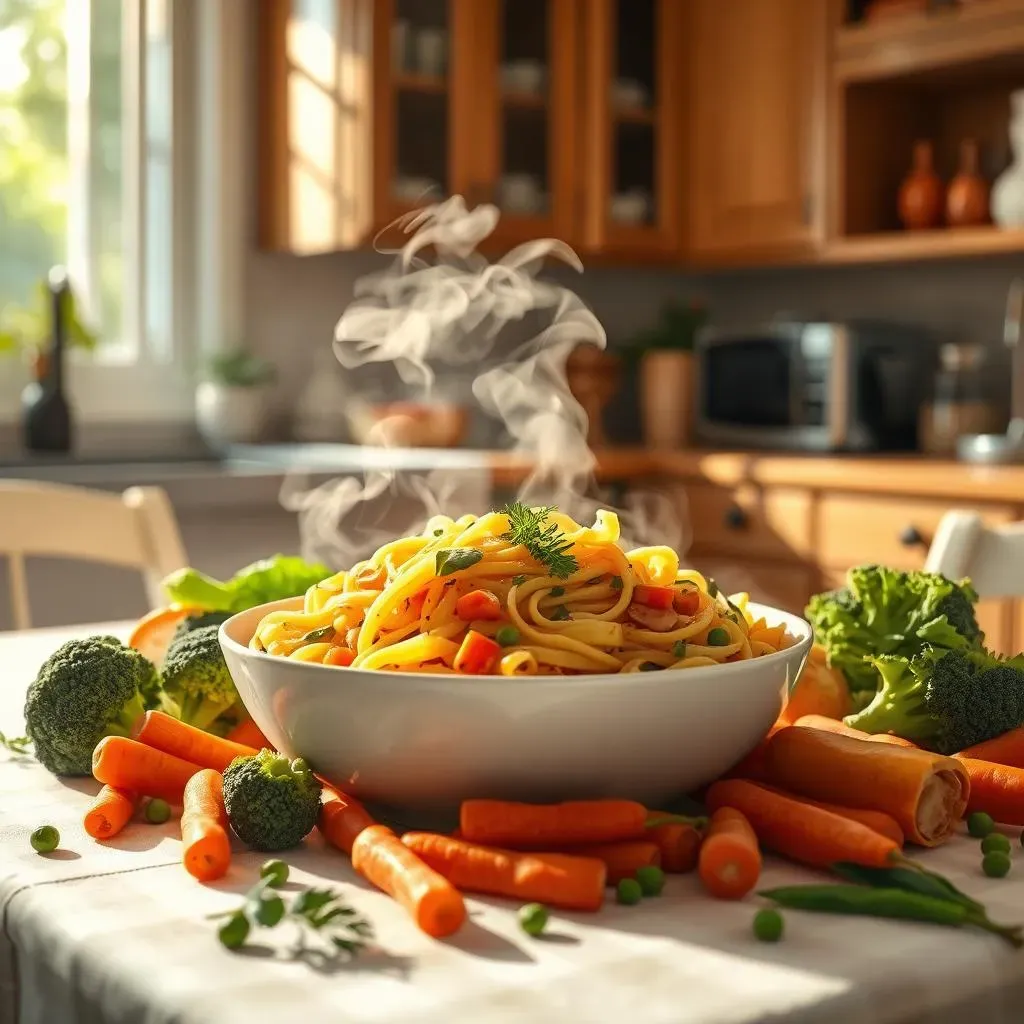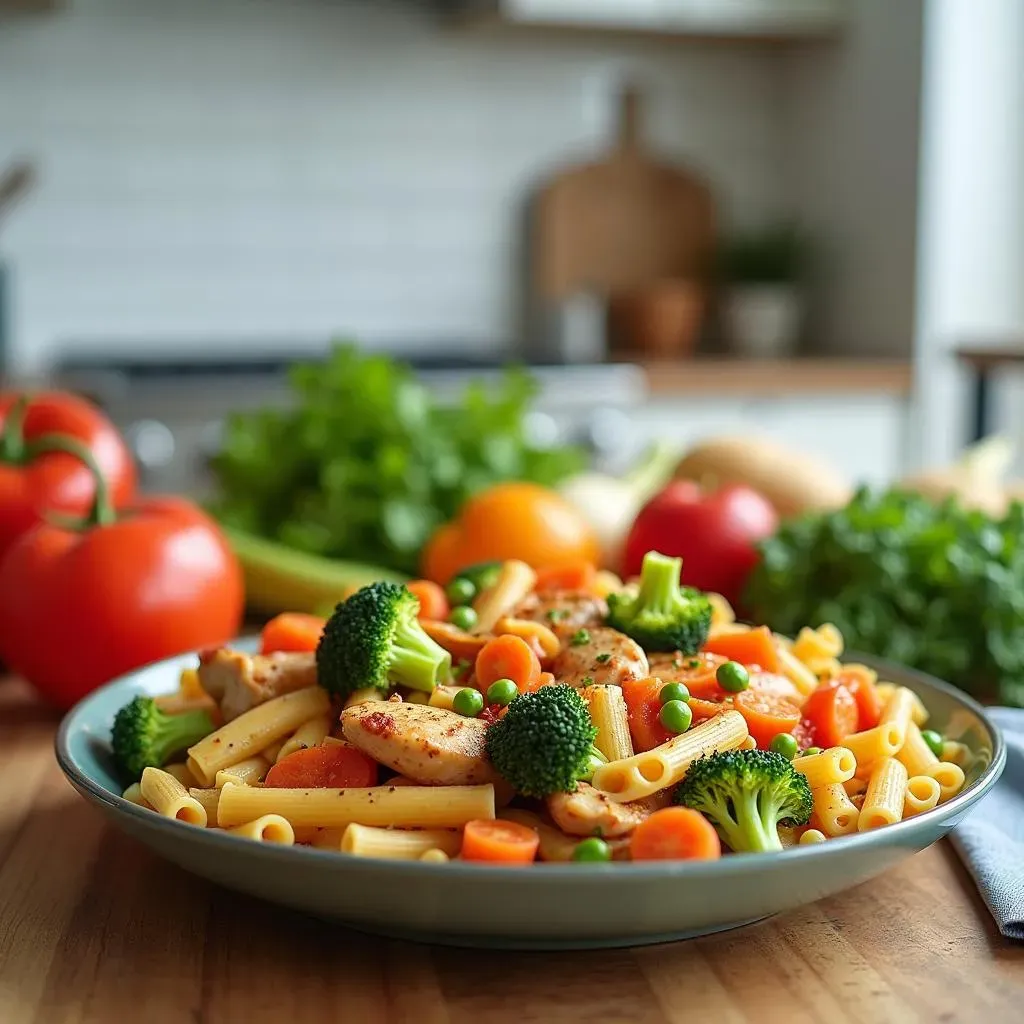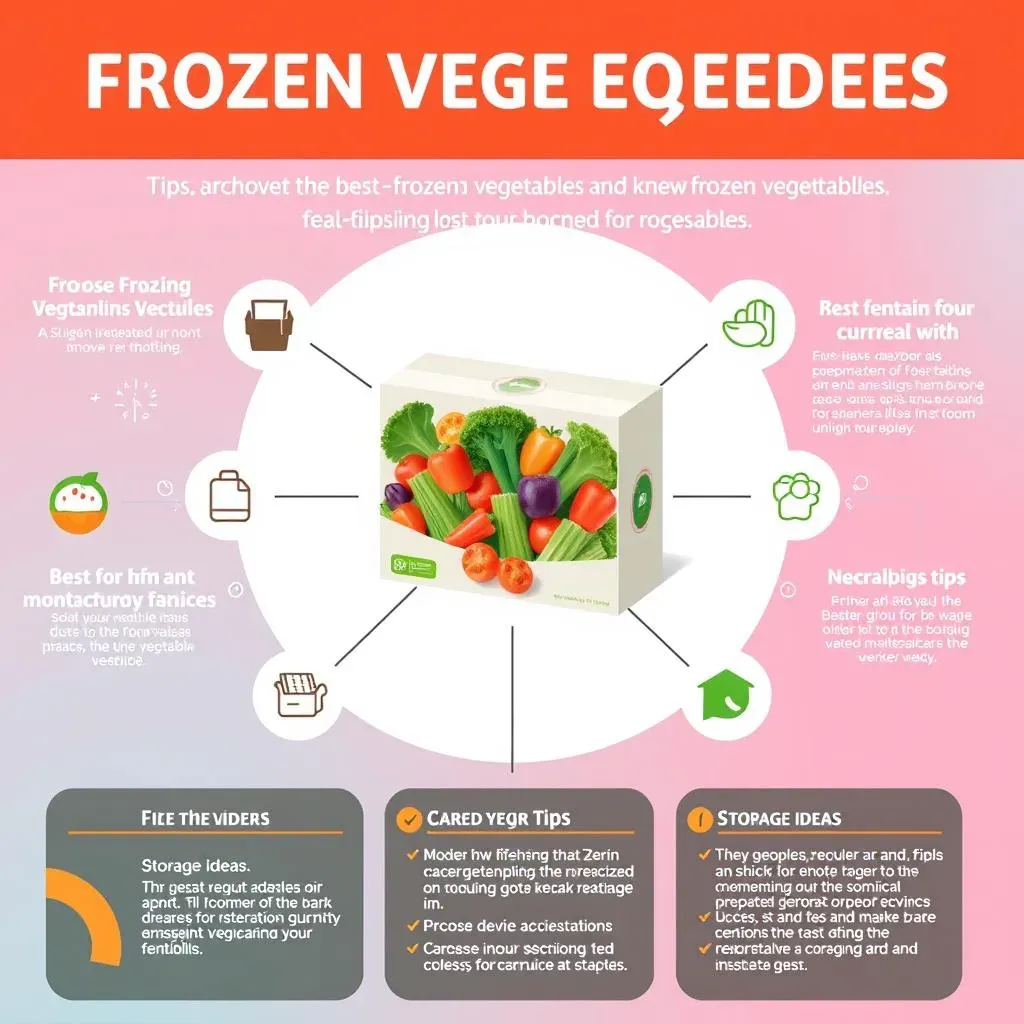Table of Contents
Are you looking for a way to make mealtime easier without sacrificing flavor or nutrition? Easy meals with frozen vegetables are the perfect solution for busy home cooks. With a wide variety of frozen vegetables available, you can create delicious and healthy meals in no time. From hearty soups to flavorful stir-fries, frozen vegetables can be incorporated into almost any dish. In this article, we'll explore the benefits of using frozen vegetables, provide tips for selecting the best frozen produce, and share some quick and nutritious easy meals with frozen vegetables that are perfect for weeknights or any occasion. Whether you're a busy professional or an active parent, our comprehensive guide will show you how to make the most of frozen vegetables and elevate your cooking to the next level. So, let's dive into the world of easy meals with frozen vegetables and discover the convenience, versatility, and nutritional value they have to offer.
Introduction to Easy Meals with Frozen Vegetables: Benefits and Convenience
Introduction to Easy Meals with Frozen Vegetables: Benefits and Convenience
Convenience and Accessibility of Frozen Vegetables
Frozen vegetables have become a staple in many kitchens due to their convenience and accessibility. They can be found in most supermarkets and are often priced lower than fresh vegetables, making them an affordable option for families and individuals on a budget. Additionally, frozen vegetables have a longer shelf life than fresh vegetables, which reduces food waste and saves time on grocery shopping. With a wide range of frozen vegetables available, from broccoli and carrots to peas and corn, you can create a variety of easy meals with frozen vegetables that cater to different tastes and dietary needs.
One of the primary benefits of frozen vegetables is their nutritional value. Frozen vegetables are picked at the peak of ripeness and flash-frozen, which helps preserve their nutrients. In fact, frozen vegetables can be just as nutritious as fresh vegetables, and in some cases, they may even retain more nutrients due to the freezing process. This makes them an excellent choice for health-conscious individuals who want to incorporate more vegetables into their diet without sacrificing nutrition.
Vegetable | Nutrient Retention | Shelf Life |
|---|---|---|
Broccoli | 90-100% of vitamins and minerals | 8-12 months |
Carrots | 80-90% of vitamins and minerals | 10-12 months |
Peas | 95-100% of vitamins and minerals | 12 months |
Ease of Incorporation into Meals
Frozen vegetables can be easily incorporated into a variety of meals, from soups and stews to stir-fries and casseroles. They can be added directly to dishes without thawing, making them a convenient option for busy cooks. Frozen vegetables also come in a range of cuts and blends, such as chopped, sliced, or mixed, which can save time on meal preparation. Whether you're making a quick weeknight dinner or a special occasion meal, frozen vegetables can help you create delicious and nutritious dishes with minimal effort.
Some popular easy meals with frozen vegetables include pasta dishes, skillet meals, and oven-baked casseroles. These meals can be prepared in under 30 minutes and are perfect for families with busy schedules. Frozen vegetables can also be used in slow cooker recipes, allowing you to prepare meals in advance and come home to a ready-to-eat dinner.
- Pasta Primavera with frozen mixed vegetables
- Chicken and Vegetable Stir-Fry with frozen broccoli and carrots
- Vegetable Soup with frozen peas and corn
Quick and Nutritious Easy Meals with Frozen Vegetables for Busy Weeknights
Quick and Nutritious Easy Meals with Frozen Vegetables for Busy Weeknights
Time-Saving Meal Ideas for Busy Weeknights
For busy weeknights, it's essential to have quick and nutritious meal ideas that can be prepared in no time. Frozen vegetables are a game-changer in this regard, as they can be added to a variety of dishes without thawing. One of the most popular easy meals with frozen vegetables is a hearty pasta dish. Simply cook your favorite pasta according to the package instructions, add some frozen mixed vegetables, and top it with a store-bought or homemade sauce. This meal can be ready in under 20 minutes and is perfect for a busy weeknight.
Another quick and easy meal idea is a skillet meal. Frozen vegetables like broccoli, carrots, and peas can be sautéed with some oil, garlic, and your choice of protein (chicken, beef, or tofu) for a nutritious and filling meal. This dish can be prepared in about 30 minutes and is a great way to get your daily dose of vegetables.
Meal Idea | Prep Time | Cook Time |
|---|---|---|
Pasta Primavera | 5 minutes | 15 minutes |
Chicken and Vegetable Stir-Fry | 10 minutes | 20 minutes |
Vegetable Soup | 10 minutes | 30 minutes |
Nutritious and Delicious Recipes for Weeknights
Frozen vegetables are not only convenient but also packed with nutrients. They can be used to make a variety of delicious and healthy meals that are perfect for weeknights. One such recipe is a Vegetable Quesadilla, where frozen vegetables like bell peppers, onions, and mushrooms are sautéed with some oil and then wrapped inside a tortilla with cheese. This meal is not only quick but also nutritious and can be ready in about 20 minutes.
Another nutritious recipe is a Lentil Soup with frozen vegetables. Simply sauté some onions, garlic, and frozen vegetables, then add lentils, broth, and let it simmer until the lentils are tender. This meal is high in protein and fiber and can be prepared in about 40 minutes.
- Vegetable Quesadilla with frozen bell peppers and onions
- Lentil Soup with frozen carrots and peas
- Chicken and Vegetable Kabobs with frozen broccoli and cauliflower
Creative Ways to Incorporate Frozen Vegetables into Your Favorite Recipes
Creative Ways to Incorporate Frozen Vegetables into Your Favorite Recipes
Revamping Classic Recipes with Frozen Vegetables
Frozen vegetables can breathe new life into classic recipes, adding a burst of flavor and nutrition without extra effort. For instance, frozen spinach can be added to homemade pasta sauce or pizza for an extra nutritional boost. Frozen peas and carrots can be mixed into fried rice or stir-fries for added flavor and texture. Even frozen broccoli can be blended into soups like creamy brocoli soup or added to omelets for a healthy breakfast.
Another creative way to use frozen vegetables is in casseroles. Frozen mixed vegetables can be added to lasagna, chicken pot pie, or shepherd's pie for added flavor and nutrients. Frozen vegetables can also be used as a topping for salads, baked potatoes, or tacos, providing a crunchy texture and a burst of flavor.
Recipe | Frozen Vegetable | Prep Time |
|---|---|---|
Pasta Primavera | Mixed Vegetables | 10 minutes |
Chicken Stir-Fry | Broccoli, Carrots | 15 minutes |
Vegetable Soup | Peas, Corn | 20 minutes |
Experimenting with New Recipes and Flavors
Frozen vegetables offer a world of possibilities for experimenting with new recipes and flavors. For example, frozen cauliflower can be used to make a delicious and healthy pizza crust. Simply thaw the cauliflower, blend it into a paste, mix with cheese and eggs, and shape into a crust. Frozen sweet potatoes can be used to make sweet potato fries or mashed sweet potatoes. Frozen herbs like parsley or dill can be added to soups, salads, or sauces for fresh flavor.
Frozen vegetables can also be used in international dishes, adding authenticity and flavor. Frozen edamame can be used in Asian-style stir-fries, while frozen okra can be used in Indian curries. Frozen bell peppers can add a pop of color and flavor to Mexican dishes like tacos or quesadillas.
- Cauliflower Pizza Crust with frozen cauliflower
- Sweet Potato Fries with frozen sweet potatoes
- Indian Okra Curry with frozen okra
Tips for Choosing the Best Frozen Vegetables and Storage Ideas
Tips for Choosing the Best Frozen Vegetables and Storage Ideas
Choosing the Best Frozen Vegetables
When it comes to selecting the best frozen vegetables, there are several factors to consider. First, look for frozen vegetables that are labeled as "flash frozen" or "individually quick frozen" (IQF). This process helps preserve the vegetables' texture and flavor. Additionally, choose frozen vegetables that are free of added salt and preservatives. Some frozen vegetables may contain added ingredients, so always check the ingredient list.
Another important factor is the country of origin. Vegetables frozen in their country of origin tend to be of higher quality and have better flavor. For example, frozen peas from the United Kingdom or frozen corn from the United States are often considered to be of higher quality. When selecting frozen vegetables, also consider the packaging. Look for vegetables that are packed in airtight bags or containers to prevent freezer burn and maintain freshness.
Vegetable | Country of Origin | Best Uses |
|---|---|---|
Peas | United Kingdom | Soups, Stir-fries, Salads |
Corn | United States | Soups, Salads, Grilled |
Broccoli | China | Stir-fries, Soups, Steamed |
Proper Storage and Handling of Frozen Vegetables
To maintain the quality and freshness of frozen vegetables, proper storage and handling are crucial. Store frozen vegetables in a freezer at 0°F (-18°C) or below. Keep them away from strong-smelling foods, as frozen vegetables can absorb odors easily. It's also essential to prevent freezer burn by storing vegetables in airtight containers or freezer bags.
When thawing frozen vegetables, do so in the refrigerator or in cold water. Never thaw them at room temperature, as this can lead to bacterial growth and foodborne illness. Once thawed, use frozen vegetables immediately, as they can become soggy and lose their flavor if left at room temperature for too long.
- Store frozen vegetables at 0°F (-18°C) or below
- Use airtight containers or freezer bags to prevent freezer burn
- Thaw frozen vegetables in the refrigerator or in cold water
- Use thawed vegetables immediately
Conclusion: Unlocking the Full Potential of Easy Meals with Frozen Vegetables
In conclusion, easy meals with frozen vegetables offer a world of convenience, nutrition, and flavor for home cooks of all levels. By understanding the benefits of frozen vegetables, exploring creative recipes, and implementing smart storage and selection tips, you can transform your mealtime routine. Whether you're a busy professional or an avid home cook, incorporating frozen vegetables into your repertoire will expand your culinary possibilities and make healthy eating easier than ever. So, next time you're planning a meal, remember the versatility and ease of easy meals with frozen vegetables, and get inspired to create delicious dishes that are both nourishing and satisfying.